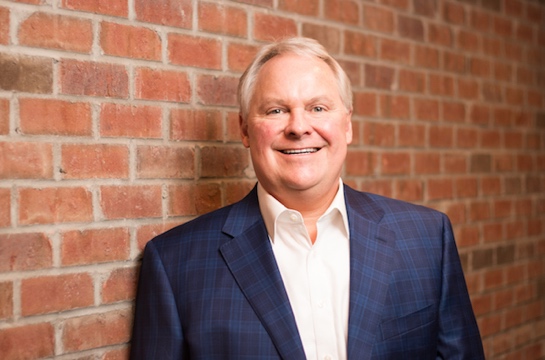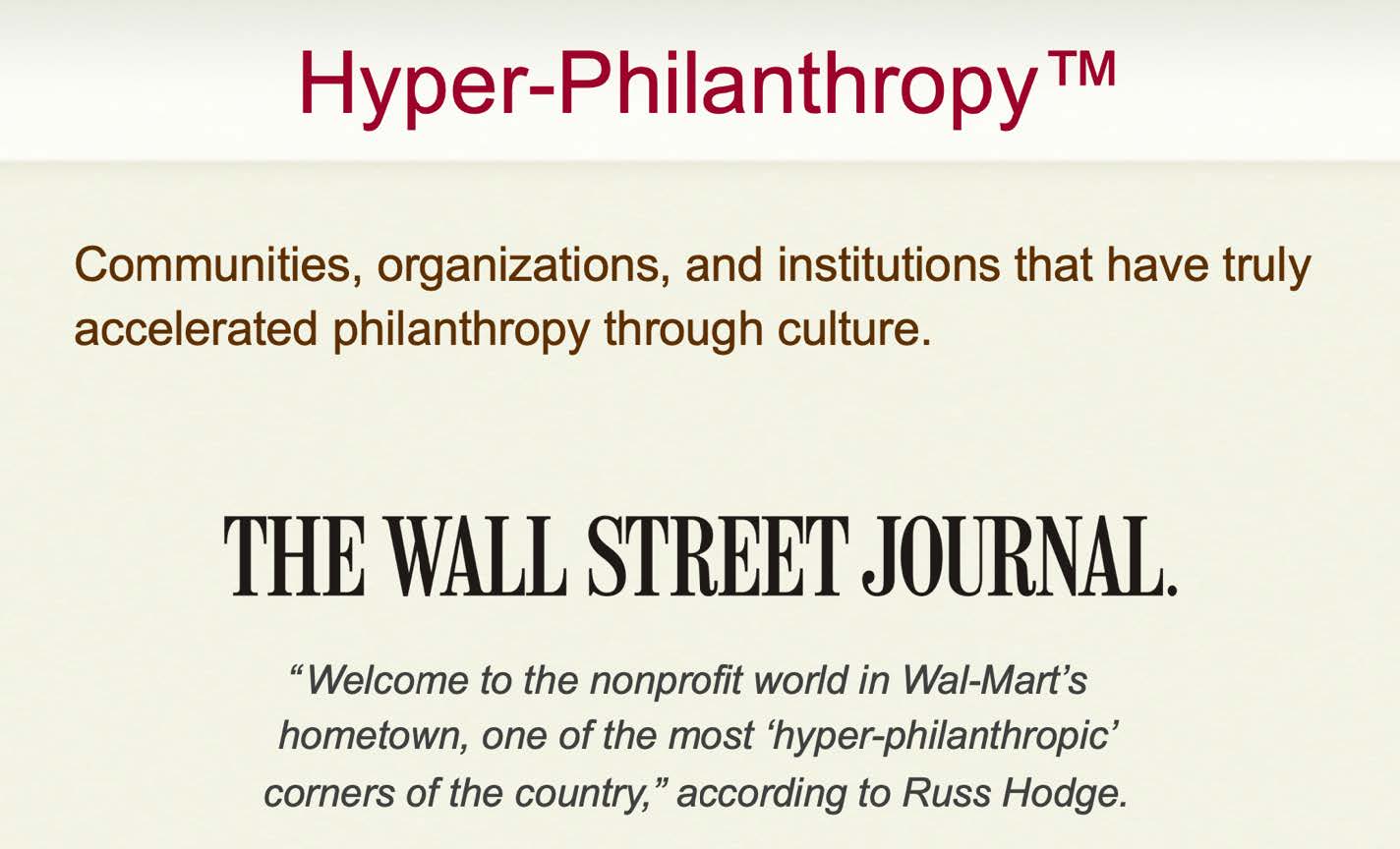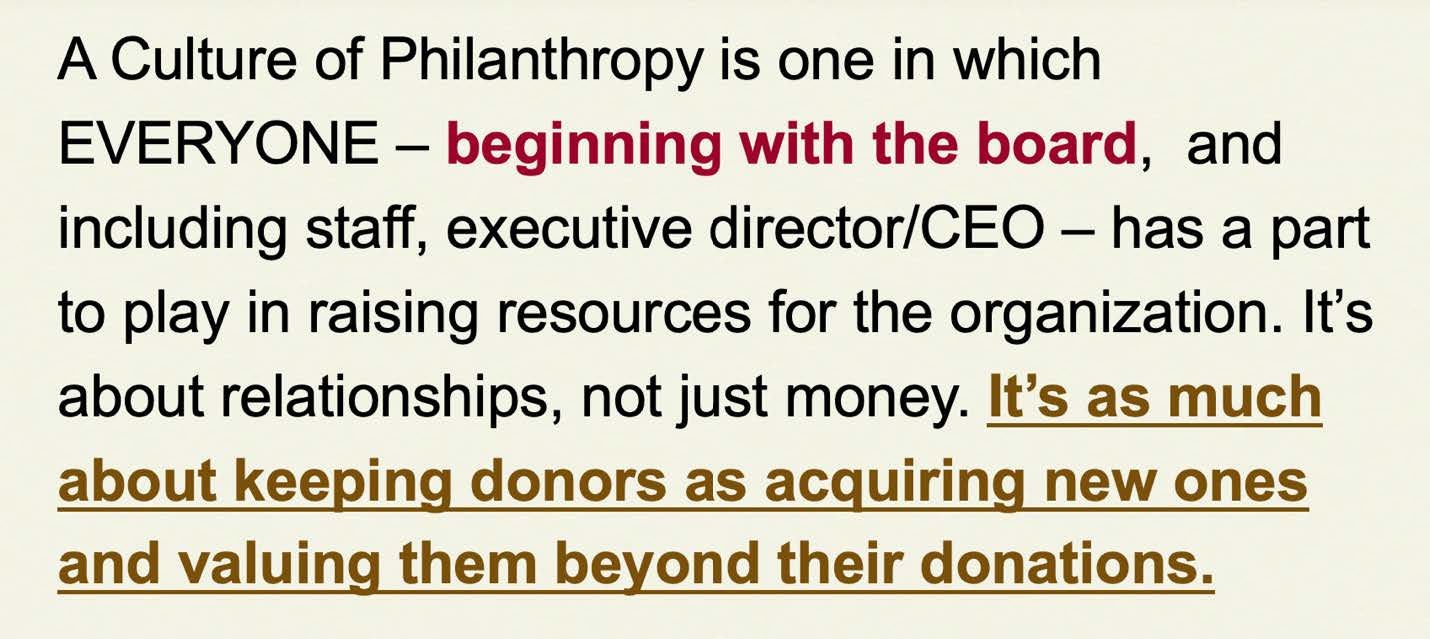 By Russ Hodge, CFRE
By Russ Hodge, CFRE
Principal
at The Hodge Group.
Experts tell us that the face of philanthropy is changing rapidly. The Giving Institute’s data reveals that individual giving makes up less than 70% of our $400 billion industry for the first time ever, and online/mobile giving rates are up almost three times the rate of overall giving. Despite these changes, though, it’s crucial to remember that the fundamentals of this field remain constant. Giving is about personal connections, now more than ever in an increasingly impersonal world, and the only thing that has changed is the medium. With that in mind, The Hodge Group (THG) has trademarked a term, Hyper- Philanthropy, that we believe can define giving in the modern age.

Hyper-philanthropy is about taking advantage of resources within your organization and your community at large to foster an environment where staff, board members, and community leaders all feel passionately about serving the public good through philanthropy.
Northwest Arkansas, for example, is a hyper-philanthropic community in large part thanks to a culture fostered by Walmart. What actions create a strong culture?
- Empowering community leaders to become brand ambassadors for an organization.
- Socializing a new initiative.
- Streamlining operations in an organization through the use of new technologies, such as advancements in the field of Artificial Intelligence (AI) and Search Engine Optimization (SEO).
Such elements make it easier for a hyper-philanthropic culture to exist because they create convenience for a community. Approximately 70% of Americans live online lives today through social media, blogs, and more, and by meeting these people where they live the promise of becoming a hyper-philanthropic organization becomes achievable.
Hyper-philanthropy recognizes three seismic shifts in how communities operate:
- A rise in people power (i.e. globalization shown through increased crowdfunding and social platforms);
- A shift from hierarchies to horizontal decision-making (i.e. the rise of telework and the popularity of open offices);
- And a fierce increase in competition (nonprofits account for over 10% of all private jobs in 2019).
Far from being scary, these seismic shifts represent outstanding opportunities that can be leveraged to create that hyper-philanthropic culture we all want to embody.
Hyper-philanthropic cultures emerge through the identification of shared core values, and such values become easy to identify through the use of new technologies.
A large social presence online makes it so that a nonprofit can offer digital and immersive tours of their facilities and/or programs to donors from anywhere in the world. The fight for philanthropic dollars is more intense than ever before, but new AI tools allow development offices to have one staffer do the work of three when it comes to prospect research and identification. By focusing on bolstering your SEO strategy through a use of blogs, social media, and other platforms, your organization achieves brand penetration that socializes initiatives. Using new technologies in these ways means more time for executive directors, Boards, and development teams to do what they do best – forge stronger relationships.
As American culture evolves, so must our philanthropic culture evolve if we are to meet donors where they live in an increasingly digital world.

Whether you are conducting a feasibility study or embarking upon a capital campaign, your organization needs to know how to make the most of scarce resources and how to best engage, excite, and empower your most promising volunteers. Watch our video on hyper-philanthropy here, and then send us a note at [email protected] if you’d like a free consultation to determine how to make your organization hyper-philanthropic.


